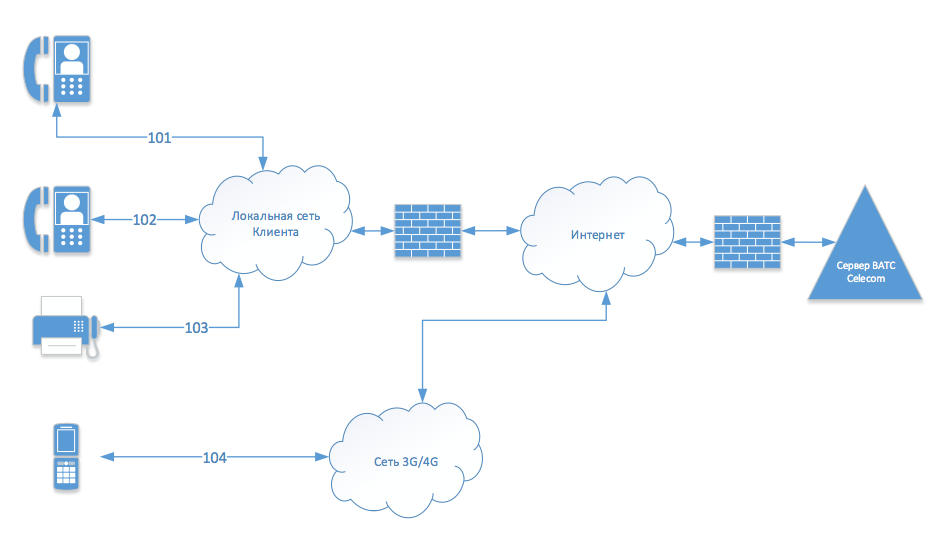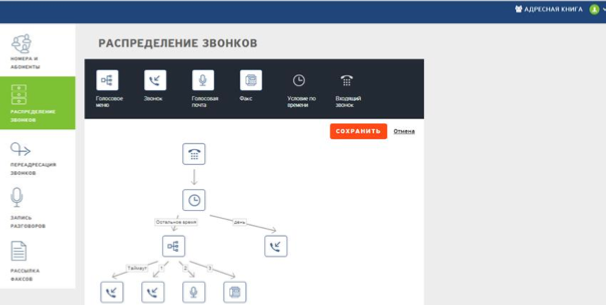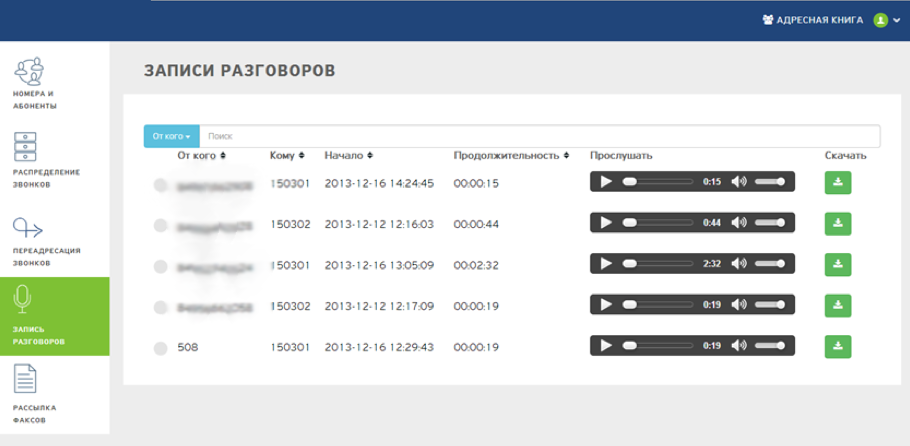How to save business on telephony: Virtual PBX

The organization of telephone communications in the office is a rather expensive business both from a financial and from a “human” point of view. However, there are ways by which you can reduce costs without losing the flexibility of the system. One of them is the so-called virtual PBX (VATS), with which you can replace an office PBX. It is about her today and we'll talk.
Why do you need it
With the help of the PBX, you can organize telephone networks that unite several offices - use short numbering, customize distribution algorithms and automate call processing.
')
In principle, it is possible to implement a virtual PBX on your own - here is a good topic on this topic. However, this option for various reasons (mainly because of its complexity) is not for everyone. In this case, of course, it is more convenient to use the services of specialized telecom operators. Today we will consider just such an option.
How it works
In the general case, the PBX operates according to the following scheme: there is a service provider, to the system of which end users are connected via gateways, IP telephony or soft phones. The connection goes via the Internet both with the local network of the client company, and through 3G / 4G networks with employees' mobile devices.
Here is the scheme of the VATS service provided by Celecom:

The advantages of this scheme are its convenience for business and ease of connection and use: it is possible to configure and scale the services of the VATS to the needs of the company through the personal account interface.
Despite its virtuality, the VATS is a fully functional solution, with its help, in particular, you can configure incoming call routing, distribute and forward calls, implement a voice menu system (IVR), record conversations, etc.
Control
Using a graphical interface, the system administrator can distribute calls in real time and set up call forwarding. Using the same interface, users can send, for example, faxes.
Here is the personal account in the Celecom system:

You can also turn on the recording of conversations and listen to them directly in the browser.

What is convenient - in the case of the VATS, the company receives real city numbers (for example, Moscow ones), with the possibility of organizing and numbers along a common line of 8-800.
Conclusion
Obviously, a business cannot afford to waste time trying to deal with non-core tasks - and the organization of telephony, of course, can be attributed to them. Many companies simply do not have enough resources to maintain their own PBX - both human and financial. Creating and upgrading telephone systems cost a lot of money, and their support can be very time consuming. Virtual PBX technology allows you to solve these problems - it is configured in a couple of clicks, easy to use and, thanks to a large number of providers, has a reasonable price.
Source: https://habr.com/ru/post/217043/
All Articles